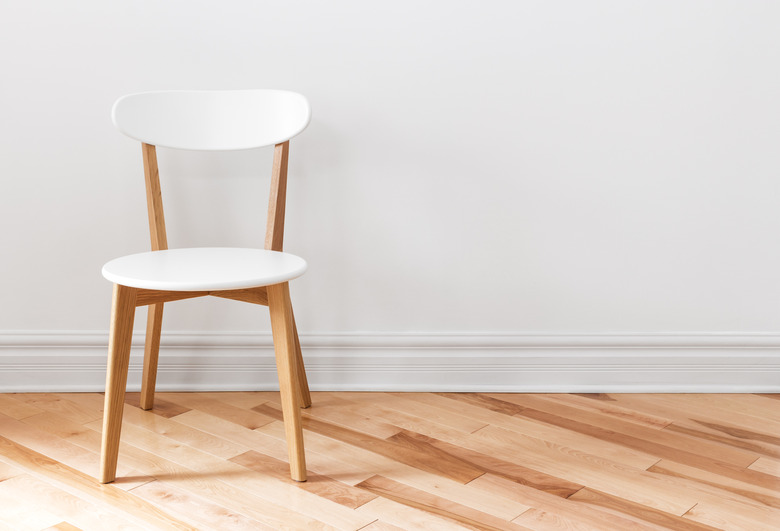How To Paint Stained Wood Trim White
Stained wood trim can seem heavy or outdated. Painting stained wood trim is an effective way to give it a modern update. To get a smooth finish with quality results, you need to do a lot of prep work on the stained wood. Cleaning, sanding, and priming the trim are important steps in the process.
Clean the Stained Trim
Before you do any work, clean the baseboards and trim to remove any gunk and dirt. If the trim is really dusty, start by vacuuming or brushing it to remove the dirt. A product like Dirtex cleaner that's designed for walls and woodwork is an easy option to remove gunk on the trim. Get new cleaning solution as needed when the water gets murky to make sure you're cleaning the trim well.
Sand the Wood Trim
Sanding the stained trim is another important step because it allows the white paint to adhere. Use 180-grit sandpaper to sand the wood trim and take the shine off the varnish. This is a time-consuming task, but be sure to break up the finish on all trim surfaces to help the primer stick.
When you're done sanding, use your vacuum to remove the dust. Use a tack cloth on the trim and the walls and floor around it to get rid of additional dust. Leaving any dust from the sanding process can result in a bumpy paint finish on the trim.
Fix Scratches or Gouges
Inspect the wood trim to look for deep scratches or gouges. These blemishes will likely be visible even after you paint the trim white, so fixing nicks and scratches now helps you get a better finished look. Smooth wood filler into the area using a putty knife and let it dry according to the package instructions. Sand the filler with fine-grit sandpaper to smooth it out so it's level with the surrounding trim.
Apply the Right Primer
Choosing the right primer is important to ensure the white paint sticks to the trim properly. Use a bonding primer for stained wood to get the best results. A stain-blocking primer can also be helpful if your stained wood trim has lots of knots or other darker areas that might show through the paint. Testing the primer you choose on a hidden area of trim helps you determine if it's going to adhere well and cover the wood look.
Before you start priming, protect the room by applying painter's tape along the edges of the trim. Cover the floor as well to protect it from primer and paint drips. Use a paintbrush to apply the primer since it gives you more control on smaller spaces like trim. Give the primer at least 24 hours to dry before you paint the trim.
Paint the Stained Wood Trim
Use trim paint in your preferred white hue to finish the job. Semi-gloss is usually used for trim. You typically need at least two coats of paint on the trim to provide adequate coverage and get a smooth finish. Apply the paint in an even coat using a paintbrush. Let each coat dry before applying another coat until you get the finished look you want.
